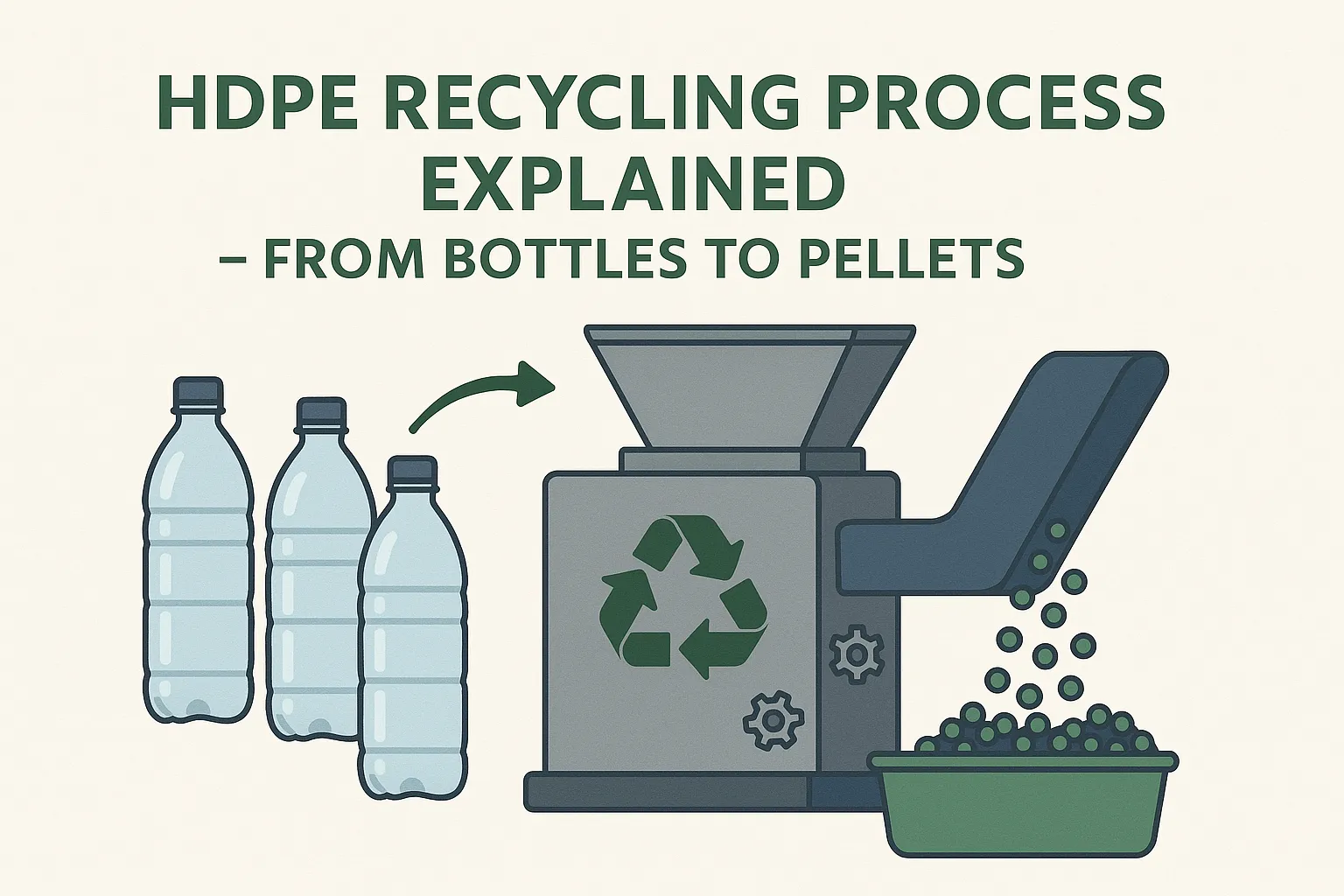High-Density Polyethylene (HDPE) is one of the most popular and widely-used plastics worldwide, known for its durability, versatility, and recyclability. Found in everyday products from milk jugs to shampoo bottles, HDPE’s potential for recycling makes it a valuable resource in the global effort towards sustainability. For professionals and investors in the recycling sector, understanding the detailed process of turning used HDPE into reusable pellets can uncover significant business opportunities and innovations.
Step-by-Step HDPE Recycling Process
1. Collection and Sorting
The journey of HDPE recycling begins at the collection points. Post-consumer HDPE materials, primarily bottles, containers, and rigid plastics, are gathered from residential curbside bins, commercial sites, and recycling facilities. Once collected, HDPE materials undergo sorting based on resin identification codes (RIC #2). Automated sorting systems employing infrared technology ensure accurate separation from other plastic types.
2. Debaling and Initial Inspection
At recycling facilities, HDPE plastics typically arrive compressed in bales. The debaling process involves cutting open these tightly-packed bundles to loosen the material. Workers perform an initial visual inspection, removing obvious contaminants such as metals, paper labels, and non-HDPE plastics, setting the stage for subsequent cleaning.
3. Size Reduction (Shredding and Crushing)
Once sorted and debaled, HDPE products are mechanically reduced in size. Shredders and crushers cut large plastic items into smaller flakes, approximately 10-20mm in size. Reducing the plastic to flakes allows for more efficient washing and separation of impurities in subsequent steps.
4. Intensive Washing and Cleaning
The cleaning process is crucial for removing contaminants like residual liquids, adhesives, labels, dirt, and oils. HDPE flakes first enter friction washers, where high-speed spinning blades and water effectively scrub off contaminants. Afterward, they move into float-sink tanks, leveraging density differences to separate HDPE (which floats) from heavier contaminants like PVC and PET, which sink.
5. Drying Process
Following washing, HDPE flakes need to be thoroughly dried to remove moisture that could negatively impact pelletizing. Centrifugal dryers spin flakes at high speeds, expelling water rapidly. Additional hot air dryers ensure flakes reach the required low moisture levels, making them ideal for the next stage.
6. Melting and Pelletizing
The cleaned and dried HDPE flakes are then fed into extruders. Extruders heat the flakes, melting them into a consistent molten state. This molten plastic is then forced through a die with small openings, shaping the plastic into continuous strands. As the strands cool down in a water bath, they solidify and are subsequently cut into uniform pellets by a pelletizer.
7. Quality Control and Testing
The resulting HDPE pellets undergo rigorous quality testing. Professionals use methods such as melt flow indexing (MFI) to assess pellet quality, density tests, moisture analysis, and contamination checks. Ensuring consistent pellet quality is crucial, as manufacturers depend on these pellets to create reliable and high-quality products.
8. Packaging and Distribution
Finally, the high-quality HDPE pellets are packaged in bulk bags, ready for shipment to manufacturers. These recycled pellets serve as raw materials in a variety of industries, including packaging, automotive parts, construction materials, and consumer goods, supporting a circular economy.
Investment Opportunities in HDPE Recycling
With increasing global demand for sustainable solutions, investing in HDPE recycling facilities presents significant financial and environmental benefits. Key opportunities include:
- Technological Innovation: Investing in advanced sorting and cleaning equipment can significantly improve yield and purity.
- Market Demand: High-quality recycled HDPE pellets are increasingly preferred by environmentally conscious manufacturers.
- Regulatory Incentives: Many governments offer financial incentives and support programs to encourage recycling operations.
Challenges and Solutions
While HDPE recycling holds promising potential, several challenges exist:
- Contamination: Educating consumers and improving collection processes can significantly reduce contamination.
- Economic Viability: Efficient equipment and optimized logistics can help achieve cost-effectiveness.
- Regulatory Compliance: Staying informed and compliant with environmental regulations helps mitigate legal risks.
Conclusion
Understanding the detailed process of recycling HDPE from bottles to high-quality pellets equips professionals and investors to make informed decisions, seize market opportunities, and contribute positively to environmental sustainability. By investing in technology, quality control, and consumer education, businesses can ensure that recycling HDPE remains both economically viable and environmentally impactful.



